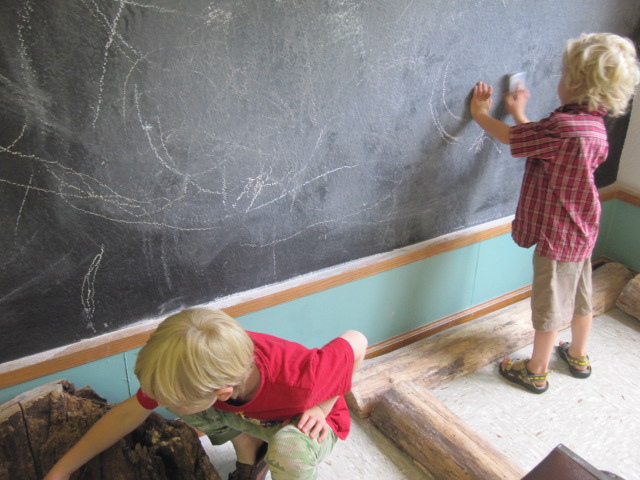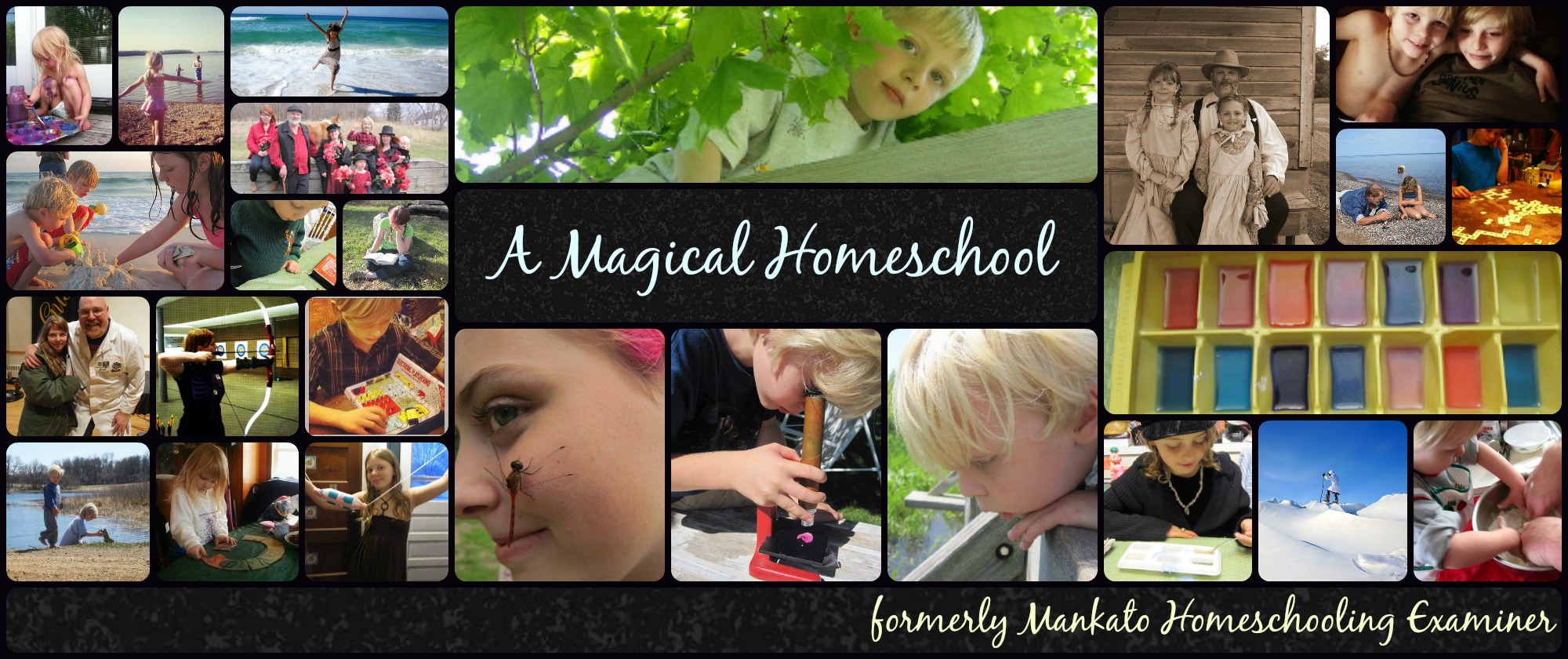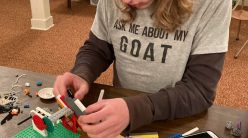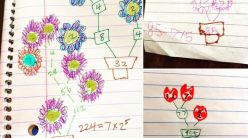
It can be very hard for some children to sit still and pay attention, even into the teen years.
While it’s a common misunderstanding that this is always a sign of an issue like ADHD or that the child is not trying hard enough, there are actually many reasons kids can have trouble concentrating.
Among them:
- Young children are hardwired to be active, so it’s developmentally appropriate for them to have trouble sitting absolutely still for more than a few minutes.
- Boys are often especially active, and it may be harder for them to sit still.
- Gifted kids may need extra stimulation (either mental or physical) to keep from getting bored and restless.
- Kids with high sensory needs may be distracted by the absence of enough sensory input, to the point where they will create chaos to meet their needs.
- Kids with low sensory thresholds can be easily overstimulated by the environment and too distracted to focus on other things.
All human beings are wired to concentrate better when our sensory needs are met. If you think about it, most adults find ways to meet their sensory needs all day at work, home and in the community:
- Office workers frequently swivel in their chairs while talking on the phone.
- Moms and grandmothers sometimes knit while watching TV or listening to a sermon at church.
- Congress members may munch on pretzels during long legislative sessions.
- College students often doodle while listening to lectures.
Studies have even found that kids perform better on standardized tests after chewing gum.
It can be extremely helpful to find ways to give your kids extra sensory input when they’re doing homeschooling.
Veteran homeschoolers know that kids will often listen to a read-aloud for much longer if they’re allowed to build with LEGOs while they listen, for instance. Other homeschool moms have their kids do math drills on the trampoline or while bouncing a ball back and forth.
Here are some great ways to meet your kids’ sensory needs that help them listen better, learn more easily, and retain more of what they learn.

Find the right environment
Kids have all different sensory needs, and it’s important to find out how your kids learn best.
Some children crave sensory input and will learn best in an environment with lots of colorful posters, background noise and other stimulation.
Other kids are easily overwhelmed by too much noise, clutter and stimulation, and they may react by either retreating into themselves or by mimicking the overstimulating environment themselves.
Pay attention to how your child learns and concentrates relating to factors such as:
- noise level (as well as types of noise)
- brightness
- visual stimulation (lots of artwork, color, posters, clutter, etc.)
- seating
Even small changes can make a big difference in how your child feels and learns in the environment. For example, many kids are naturally calmed by sensory seating like bean bags and hammocks. Even if you can’t change how noisy or crowded a room is, you can help your child manage it if you provide places like this to help.
You can also make small changes in lighting and background noise to make a big difference for some kids. Some kids react very negatively to fluorescent lights, for instance, or to very bright or very dim rooms.
Other kids will react well to having some sort of small space to use for quiet reading time or doing schoolwork. You can create a “cubby” space in a closet, corner or window seat. You can even make a fun little den for younger children in an oversized box with some pillows.
Experiment with sound
Some kids are easily distracted by noise and will benefit from noise canceling headphones or the ability to do their schoolwork in a quiet room.
Other kids will actually learn better if there is music or some background noise as they’re reading or doing their schoolwork.
Different types of noises may affect kids differently, too. Classical music may help some children concentrate, while it may agitate others. Nature sounds like birds or the ocean can be calming for some kids, while they can distract others.
Bounce a ball to drill facts
This is a classic homeschool trick for good reason. Many mothers have found out over the years that kids memorize things much more easily if they can use their whole bodies in the process.
Bounce a ball back and forth as you recite multiplication facts, shoot hoops while counting by threes, call out math questions as you toss the ball, and otherwise use balls to help the information take hold.
Jumping and bouncing
Believe it or not, bouncing is one of the best sensory integration exercises to help the brain.
Kids can use bouncing the same way they use balls for homeschooling — timed to math facts, while reciting items to memorize, and so on.
Of course, they can also just use it for fun and good health. Not only is bouncing great exercise, but it also stimulates the lymphatic system and helps the body fight illness.
When your child is finished bouncing, that’s the perfect time to introduce new concepts, incidentally. Activities like bouncing, rocking and shifting the body stimulate areas of the brain that improve concentration and attention for up to two hours afterwards.
Let them use their hands
Encourage kids to use their hands while listening to books and lessons
It may have been a bad thing to doodle during class when we were in school, but it’s actually a great idea in the homeschool.
Kids can be naturally fidgety, and it can help them pay attention if they can busy their hands while you read aloud or talk about the days’ lessons.
Some great ways for kids to use their hands include:
- Using building toys like LEGOs and blocks while listening to history lessons
- Doodling and drawing while learning science concepts (it can be great if kids draw illustrations of what they’re learning)
- Creating an art project that goes along with a read-aloud book
- Doing hand crafts such as finger knitting or crochet while listening to science podcasts
- Using clay or playdough while watching an educational video
It’s important to choose items that will occupy your child’s hands without requiring too much thought. This isn’t the time to do a complicated LEGO project that requires too much planning and concentration, of course.
Teenagers can use these same principles. My 10th grader likes to listen to science podcasts while playing Minecraft, for example. She gets too distracted if she listens to the podcasts without something else to occupy her hands and her vision (and she finds Minecraft too dull if she doesn’t have something interesting to listen to while she does it). She also does art on her drawing tablet while she takes part in online courses and lessons.

Use ball chairs
Ball chairs have become increasingly popular in classrooms and offices because of how well they help users improve their concentration, posture and alertness.
Gaiam reported in How Sitting on a Ball Helps Kids Focus and Do Better In School:
During the 1980s, some occupational therapists began recommending them to educators for classroom use, deeming them particularly helpful for children with special learning needs.
Then in 2003, a study was published in the American Journal of Occupational Therapy concluding that in students with ADHD, sitting on therapy balls improved behavior and legible word productivity. In other words, students using ball chairs were able to sit still, focus and write more words clearly.
Mayo Clinic in Rochester seconded those findings in 2007 with a study on the benefits of a chairless classroom. In the Mayo study, which focused on improving learning and reducing obesity by making children more active, researchers found that the ability to move around more while sitting made the students more attentive.
Chair balls can be purchased for as little as $20 from sites like Amazon, but kids can also just try sitting on an oversized ball during homeschool lessons.
Use weighted objects
This is a common trick for preschoolers and elementary teachers, especially those who have been trained in Sensory Integration techniques.
Children who are very wiggly and active generally respond very well to holding weighted objects when they need to sit down and listen quietly.
Pacific Pediatric Supply explains:
Based on the sensory integration technique of deep pressure providing the child with unconscious information from the muscles and the joints, the added weight or pressure may help the child calm down and better integrate sensory information. As a result, the child may become more organized, and improve in their ability to concentrate on play, learning or eating.
This trick works amazingly well on many wiggly young children (and even older ones).
You don’t need to buy an expensive weighted object. A heavy sleeping bag works well, as does a sturdy stuffed animal that’s been refilled with aquarium gravel.
Let them chew gum before schoolwork and tests
Studies have shown that people actually perform better on tests if they’re allowed to chew gum before taking the tests.
One study found:
Chewing gum was associated with performance advantages on multiple measures when gum was chewed for 5 min before, but not during, cognitive testing. The benefits, however, persisted only for the first 15-20 min of the testing session, and did not extend to all cognitive domains.
The benefits persist whether it’s sugar-free gum or not, and are especially persistent with minty gums.
Not only that, but chewing gum helps us manage stress better and pay better attention too. Another study found:
Chewing gum was associated with greater alertness and a more positive mood. Reaction times were quicker in the gum condition, and this effect became bigger as the task became more difficult. Chewing gum also improved selective and sustained attention. Heart rate and cortisol levels were higher when chewing which confirms the alerting effect of chewing gum.
Frequent activity
Children’s brains work best when they mix learning with lots of physical activity. In fact, they will have better concentration, memory and focus for two hours after they engage in physical activity.
Be sure kids get at least 20 minutes of exercise for every couple of hours that they’re expected to sit still. It’s not just better for their bodies, it’s better for their brains, as well.
***
Want to support our site?
Treat yourself to something on Amazon!
You deserve it, and it will help us out.
It’s a win-win! 😉
This site is an affiliate for Amazon.com. Purchases made through this link will earn us a small commission, at no extra charge to you.
***
This article originally appeared on examiner.com




